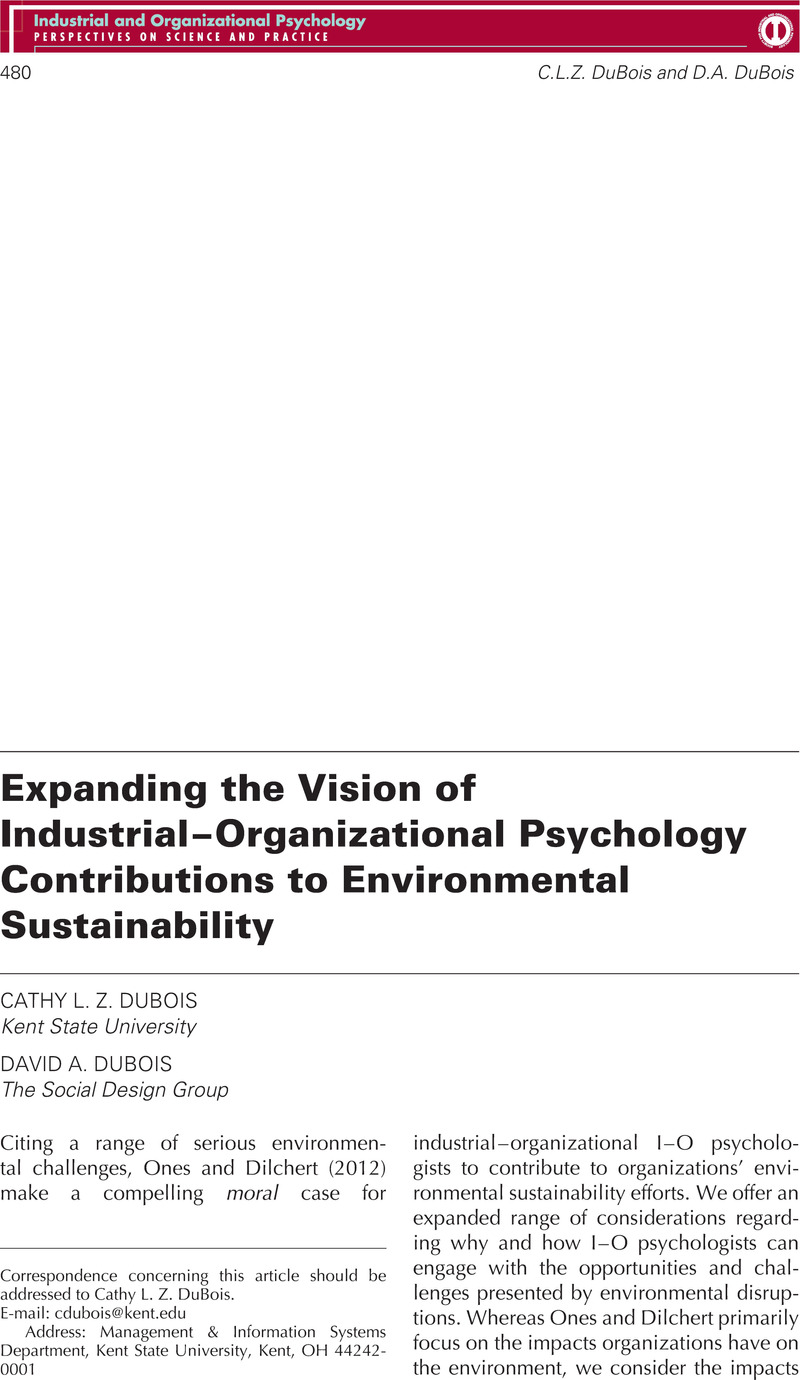Crossref Citations
This article has been cited by the following publications. This list is generated based on data provided by Crossref.
Dilchert, Stephan
and
Ones, Deniz S.
2012.
Environmental Sustainability in and of Organizations.
Industrial and Organizational Psychology,
Vol. 5,
Issue. 4,
p.
503.
Zibarras, Lara D.
and
Coan, Phillipa
2015.
HRM practices used to promote pro-environmental behavior: a UK survey.
The International Journal of Human Resource Management,
Vol. 26,
Issue. 16,
p.
2121.
Dembek, Krzysztof
Singh, Prakash
and
Bhakoo, Vikram
2016.
Literature Review of Shared Value: A Theoretical Concept or a Management Buzzword?.
Journal of Business Ethics,
Vol. 137,
Issue. 2,
p.
231.
Shanahan, Ford
and
Seele, Peter
2017.
Creating Shared Value – Concepts, Experience, Criticism.
Vol. 52,
Issue. ,
p.
141.
Blanchard, Kevin
and
Gray, David
2019.
Can shared value and entrepreneurship contribute to SME development within rural locations?.
Strategic Change,
Vol. 28,
Issue. 2,
p.
147.
Yang, Ta-Kai
and
Yan, Min-Ren
2020.
The Corporate Shared Value for Sustainable Development: An Ecosystem Perspective.
Sustainability,
Vol. 12,
Issue. 6,
p.
2348.
Sarma, Ekta
and
Rao, Madasu Bhaskara
2020.
Sustainable Human Resource Management.
p.
37.
Khurshid, Hamid
and
Snell, Robin Stanley
2022.
Examining distinctions and relationships between Creating Shared Value (CSV) and Corporate Social Responsibility (CSR) in Eight Asia-based Firms.
Asian Journal of Business Ethics,
Vol. 11,
Issue. 2,
p.
327.
Faisal, Shaha
2023.
Green Human Resource Management—A Synthesis.
Sustainability,
Vol. 15,
Issue. 3,
p.
2259.
Shekhar
and
Das, Debadyuti
2023.
Enablers of ‘Creating Shared Value’: A Total Interpretive Structural Modeling–Polarity Approach.
Global Journal of Flexible Systems Management,
Vol. 24,
Issue. 2,
p.
291.
Ferdousi, Farhana
and
Abedin, Nuren
2023.
Strategic Human Resources Management for Creating Shared Value in Social Business Organizations.
Sustainability,
Vol. 15,
Issue. 4,
p.
3703.





